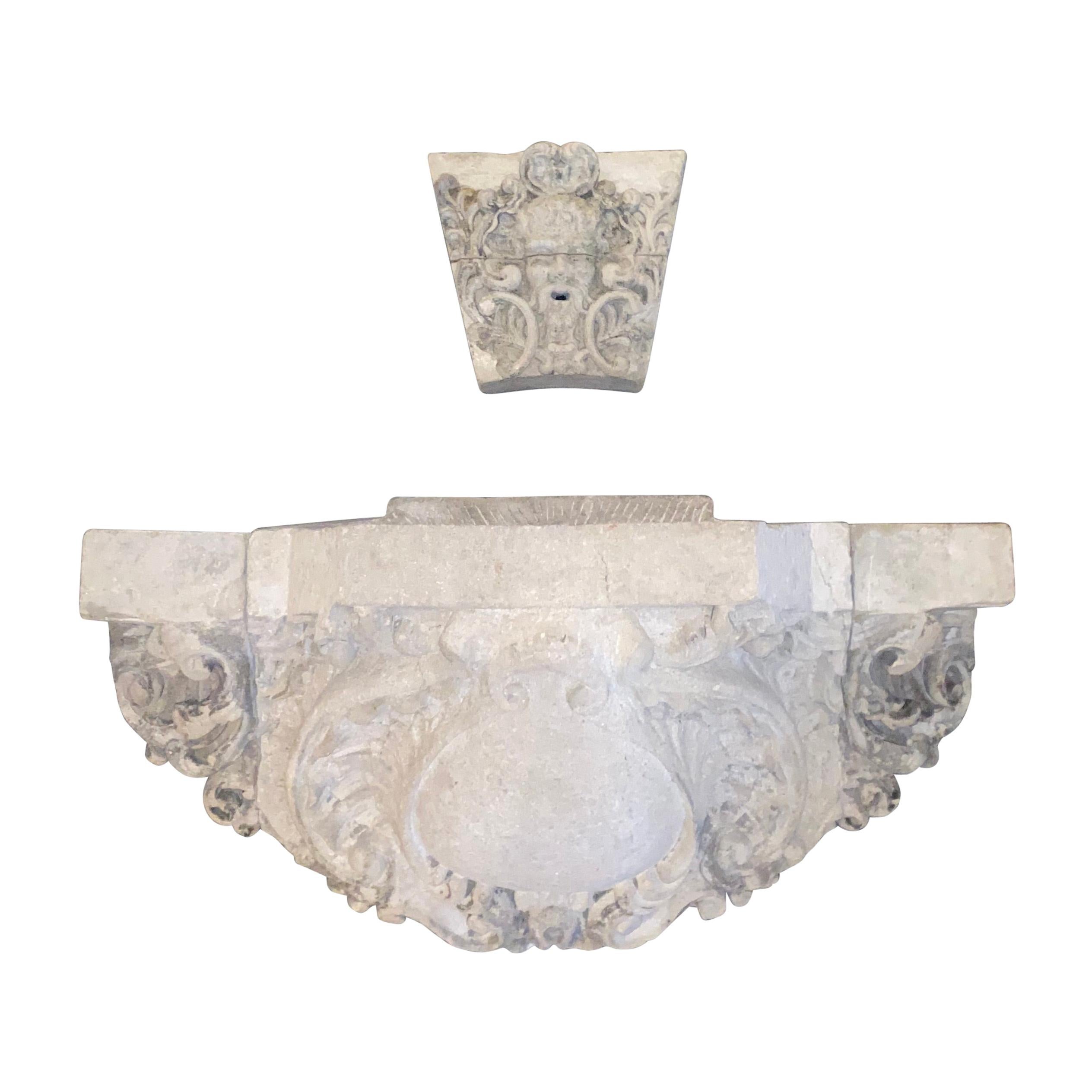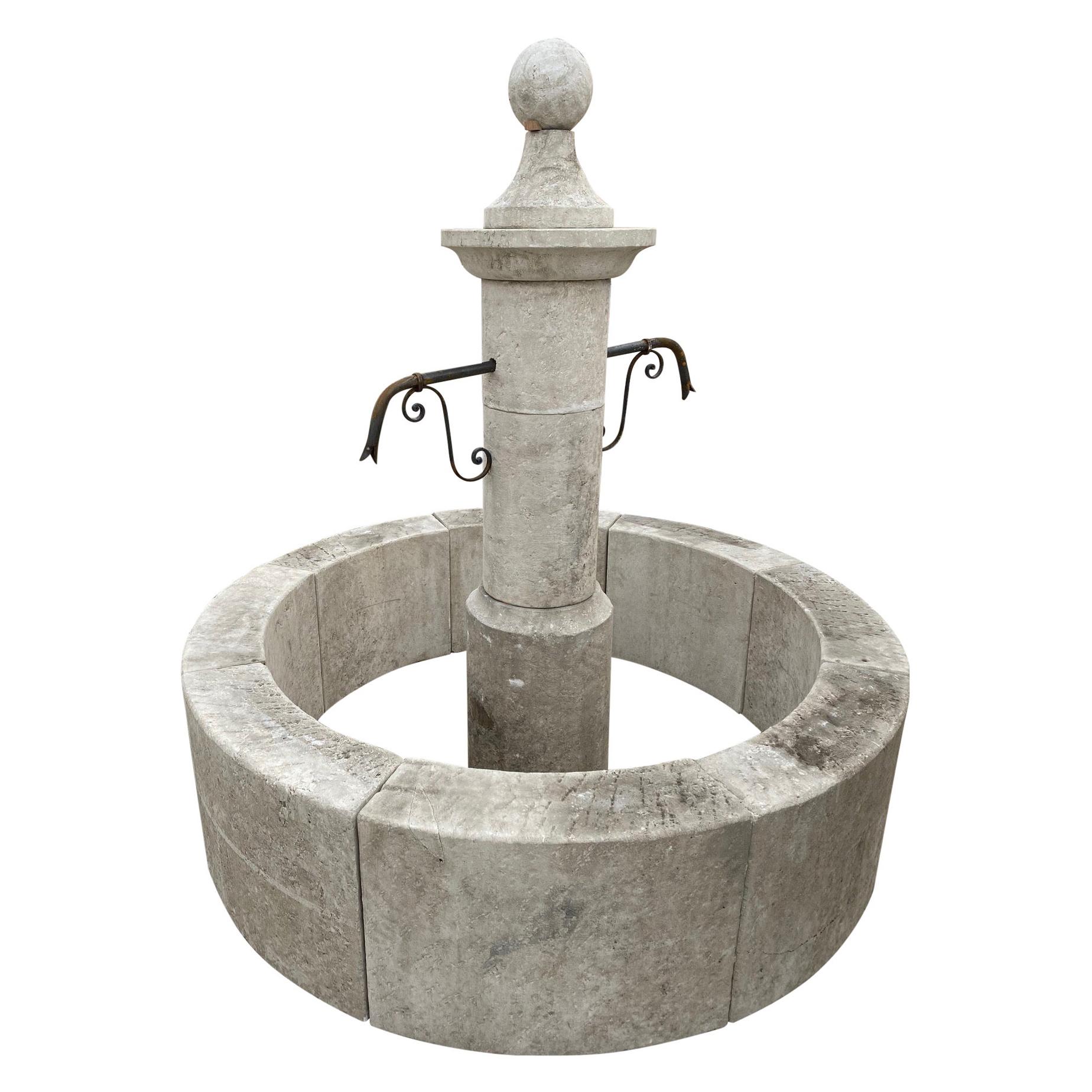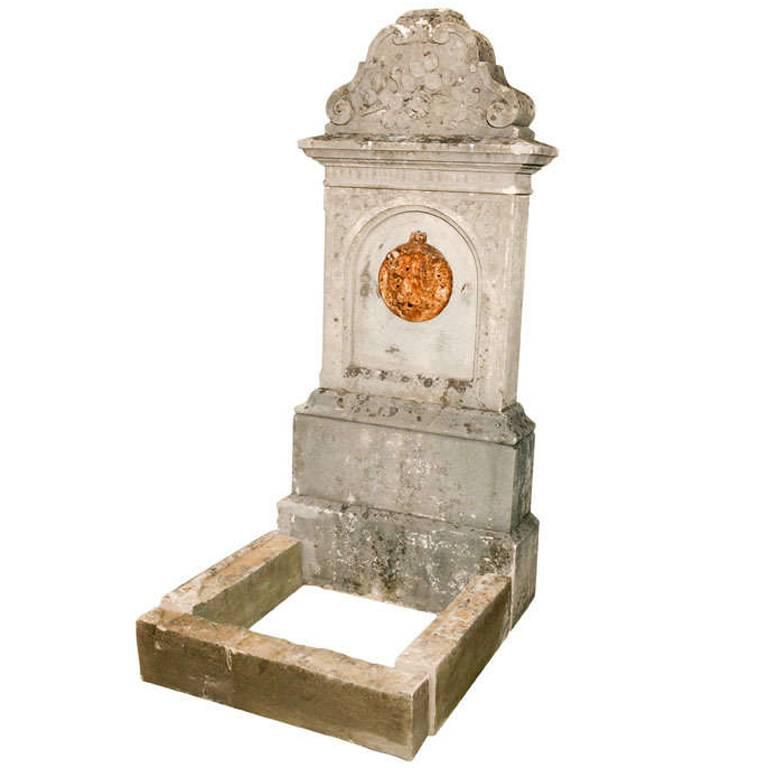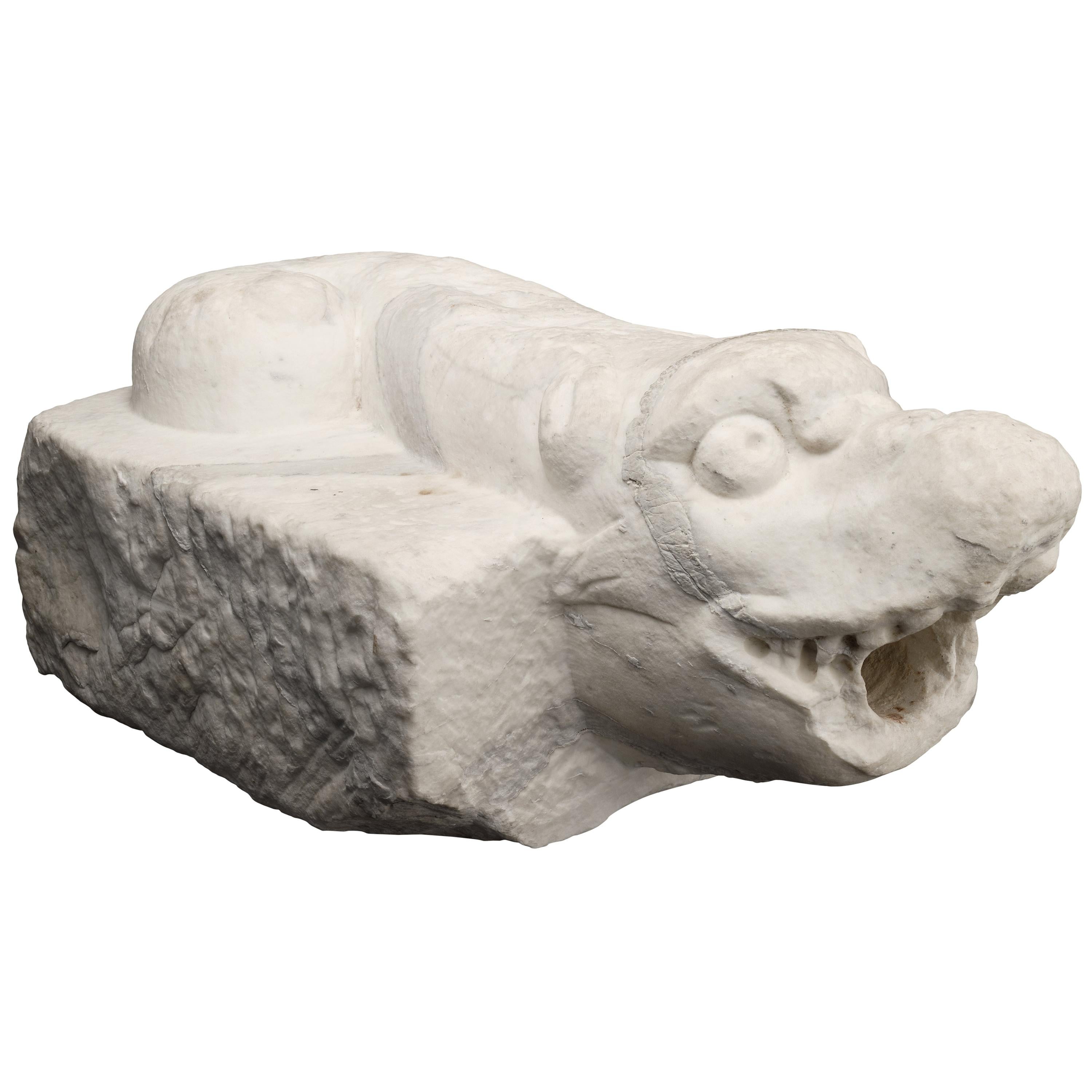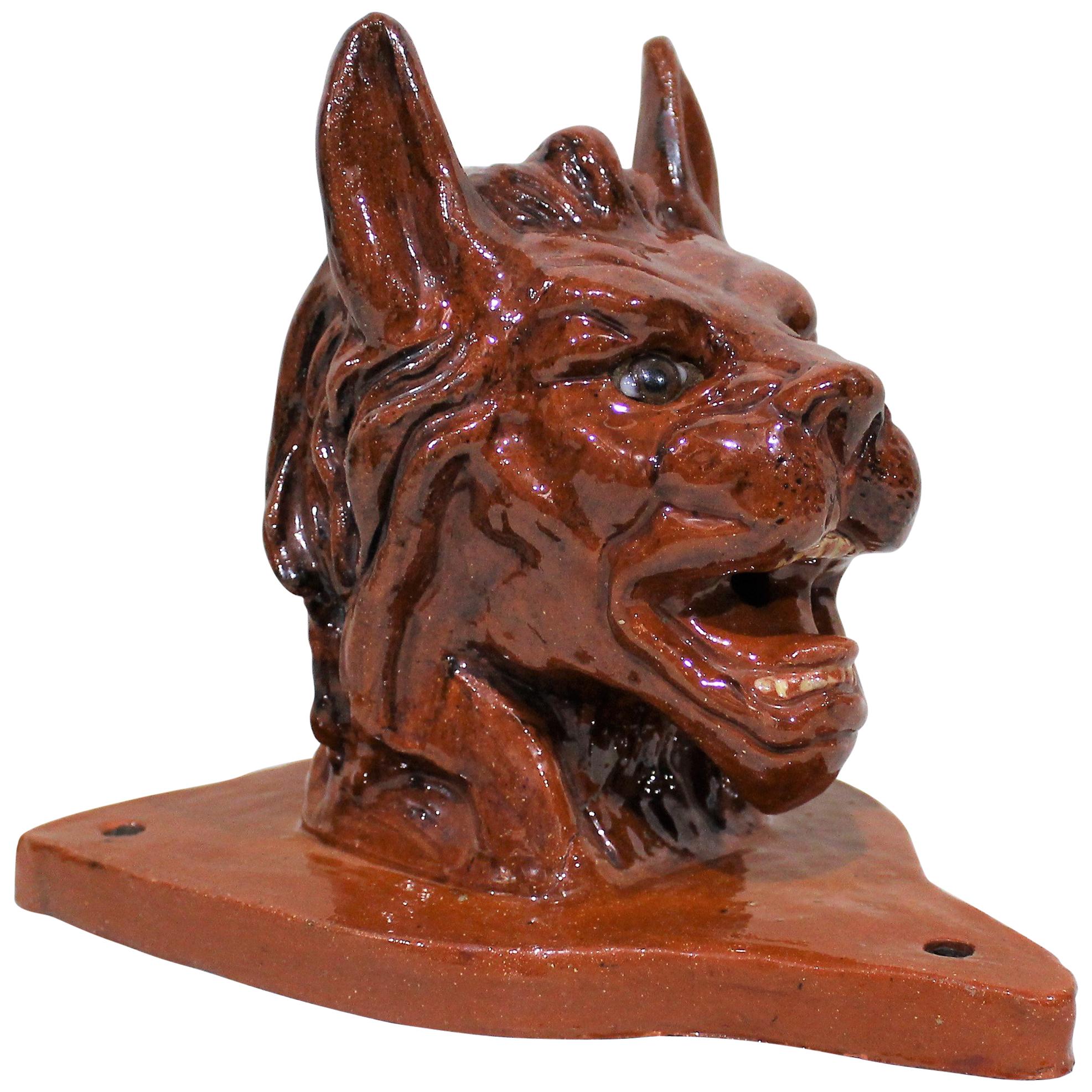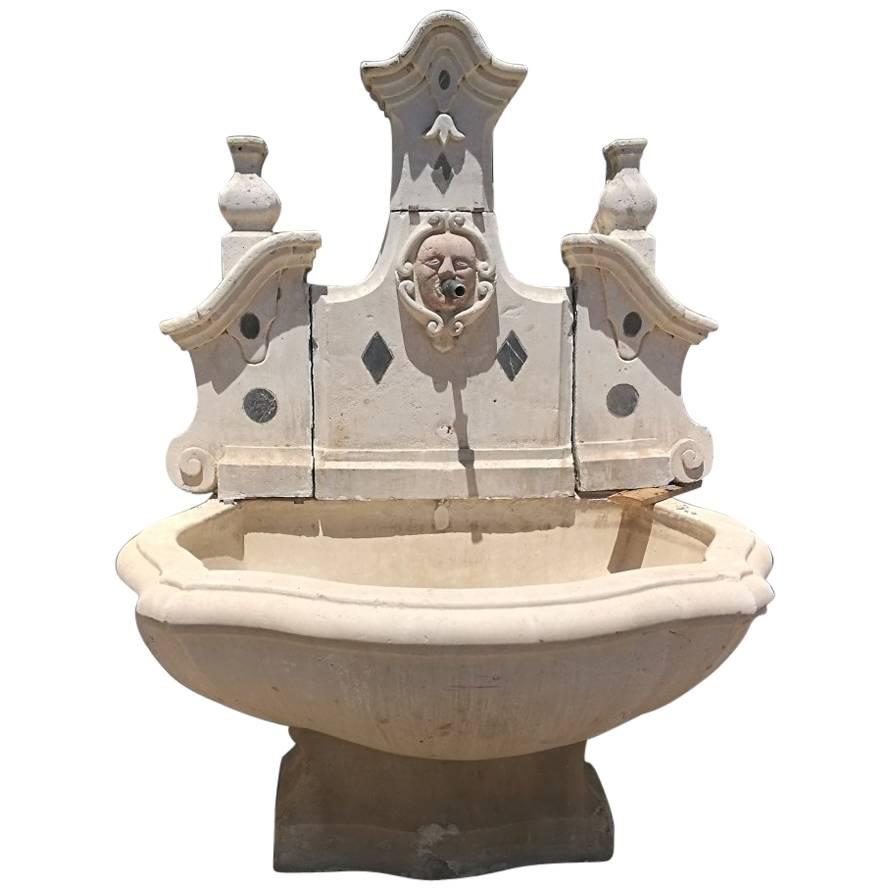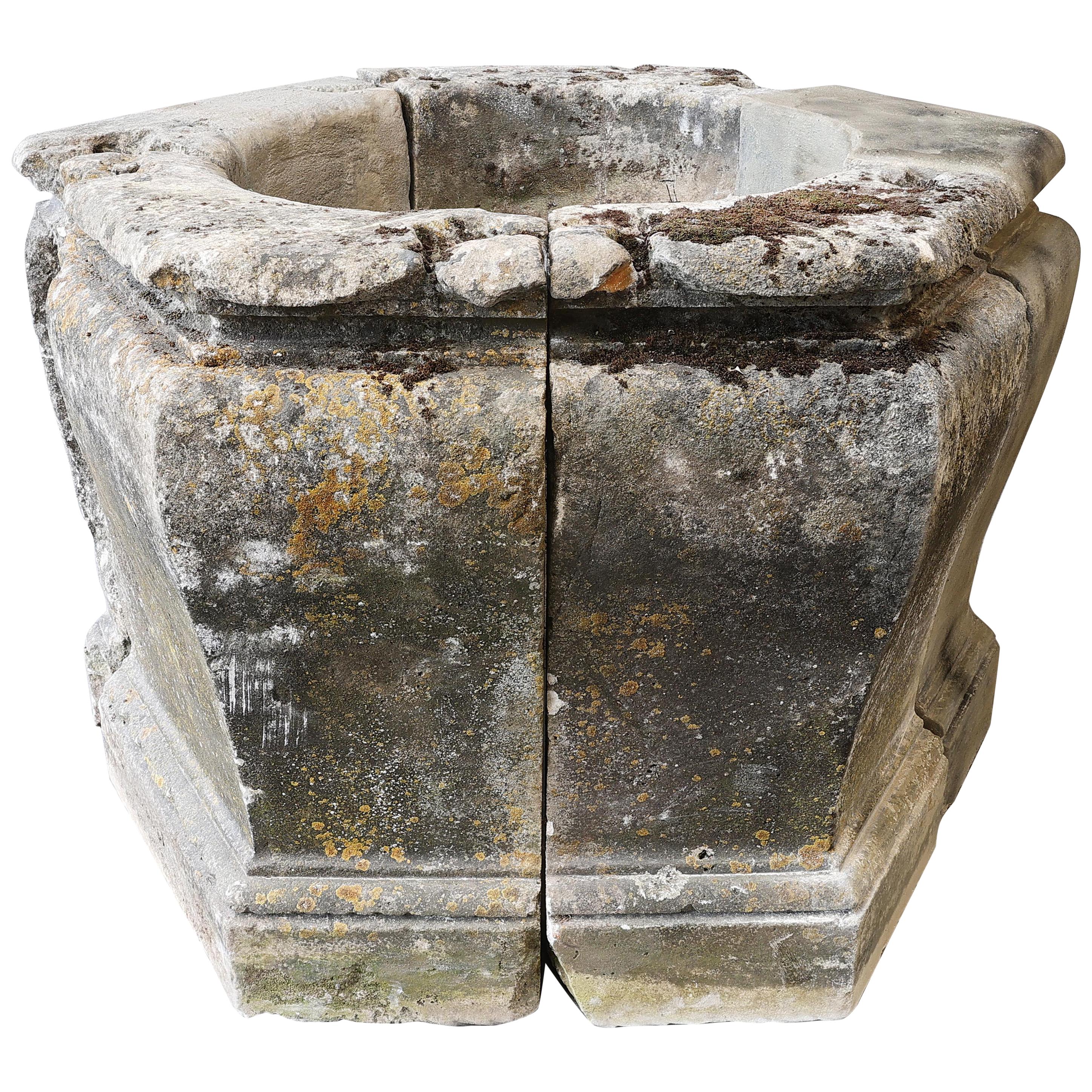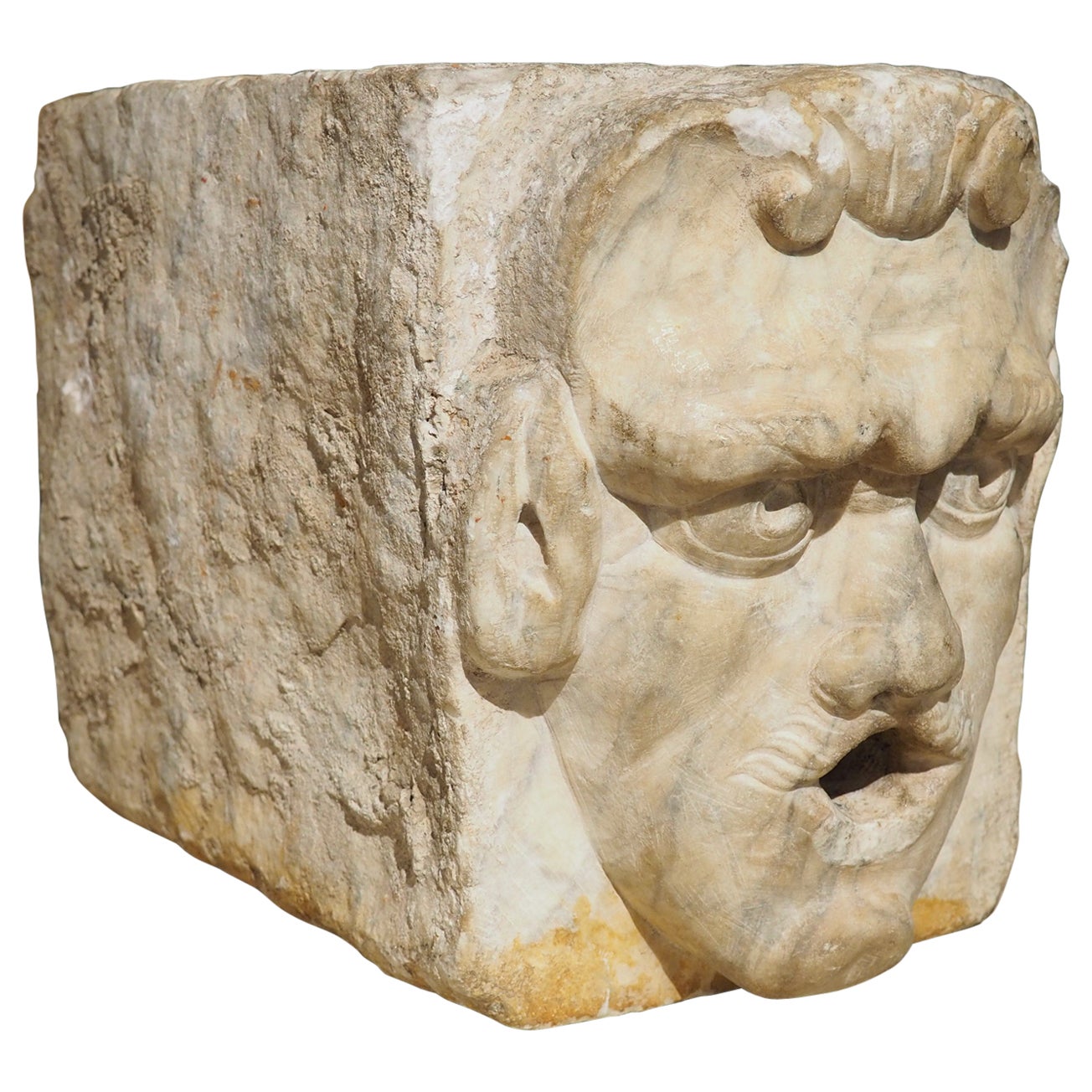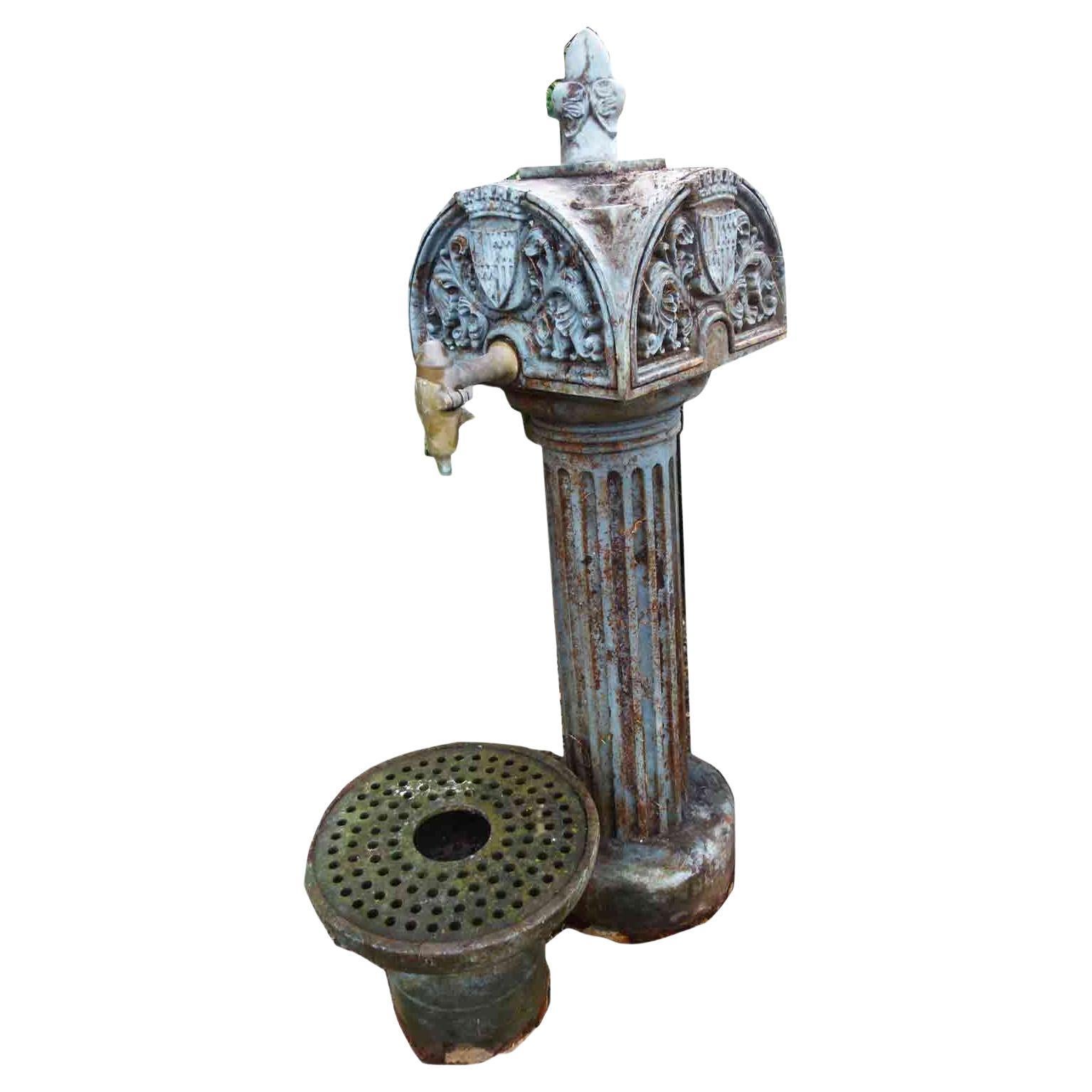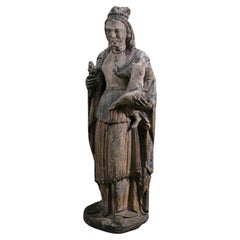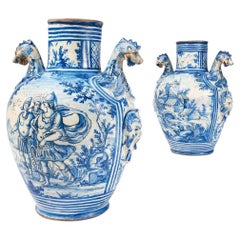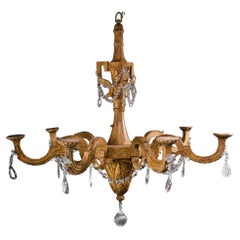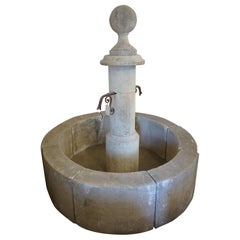
Important Renaissance Fountain in Limestone, Burgundy, 16th Century
View Similar Items
Want more images or videos?
Request additional images or videos from the seller
1 of 8
Important Renaissance Fountain in Limestone, Burgundy, 16th Century
About the Item
- Dimensions:Height: 48.43 in (123 cm)Diameter: 36.23 in (92 cm)
- Style:Renaissance (Of the Period)
- Materials and Techniques:
- Place of Origin:
- Period:
- Date of Manufacture:1560
- Condition:Wear consistent with age and use. The lead basin and matching lead lion mask were added more recently.
- Seller Location:Walkertshofen, DE
- Reference Number:1stDibs: LU7245234060872
About the Seller
No Reviews Yet
Vetted Seller
These experienced sellers undergo a comprehensive evaluation by our team of in-house experts.
Established in 1990
1stDibs seller since 2022
More From This SellerView All
- Virgin in limestone with remains of old colours, prob. Burgundy, 16th centuryLocated in Walkertshofen, BYThe very expressive Virgin, in a strictly upright posture, carries the child Jesus on her (damaged) left arm. In her right hand, she holds the shaft of a scepter. She looks at the ob...Category
Antique 16th Century French Renaissance Figurative Sculptures
MaterialsLimestone
- Pair of Important Vases, Manufacture De Savona, Late 17th/Early 18th CenturyLocated in Walkertshofen, BYLarge and important pair of vases from the Savona factory. Both vases have side handles ending in dragons. The reserves on the side are decorated with figurative scenes and architect...Category
Antique Early 17th Century Italian Renaissance Vases
MaterialsEarthenware
- Important woodcarved and gilted Louis XVI chandelier, Italy, late 18th centuryLocated in Walkertshofen, BYRound baluster shaft decorated with acanthus leaves. Six curved arms decorated with crystal hangings. High fusee with three bars decorated with crystal. Central Italy about 1800. Extremely pure and minimalistic chandelier...Category
Antique Late 18th Century Italian Louis XVI Chandeliers and Pendants
MaterialsWood
- Rare Miniature Frame, Rome 17th CenturyLocated in Walkertshofen, BYRare gilded wooden frame qualified by a polychrome painted metal band with tiny foliage ornaments. Silver metal sconces chiselled with cherub heads between scrolls. Rome, 17th Two co...Category
Antique 17th Century Italian Renaissance Picture Frames
MaterialsMetal
- Spectacular 'Morser', Florence, Italy, 17th centuryLocated in Walkertshofen, BYThe mortar is of exceptional quality. The sculptural execution of the carved decoration is appealing. Large scrolls of leaves terminate in stylized eagle heads. The sides are adorned...Category
Antique Mid-17th Century Italian Renaissance Vases
MaterialsMarble
- Pair of Monumental Carrara Marble Candlesticks, Rome, 17th CenturyLocated in Walkertshofen, BYThese monumental candlesticks are absolutely rare in this execution. They are divided into four segments in a multiple way and perfectly rotated. They are connected to each other by ...Category
Antique Late 17th Century Italian Renaissance Candlesticks
MaterialsCarrara Marble
You May Also Like
- 19th Century French Limestone Wall FountainLocated in Beervelde, BEOne of a kind French wall fountain in limestone. Typical LXIV style of the 19th century. Amazing and grand fountain for a bespoke luxury lifestyle design. The head stone measures: 7...Category
Antique 19th Century French Louis XIV Fountains
MaterialsLimestone
- Hand Carved Limestone Central FountainLocated in Dallas, TXHere we offer a hand carved limestone central fountain with two brass down spouts. This fountain has a large, deep basin and will provide th...Category
21st Century and Contemporary French Fountains
MaterialsLimestone
- Hand Carved Limestone Central FountainLocated in Dallas, TXHere we offer a hand carved limestone central fountain with two brass down spouts. This fountain has a large, deep basin and wil...Category
21st Century and Contemporary French Fountains
MaterialsLimestone
- 19th Century French Wall FountainLocated in Sheffield, MACarved limestone French limestone wall fountain with metal lion face.Category
Antique 19th Century French Louis XV Fountains
MaterialsLimestone, Iron
- Italian Ancient Marble Sculpture Fountain, Late 16th CenturyLocated in Milano, ITSea monster Carrara marble mouth fountain Italy, late 16th century It measures 13.8 x 31.5 x 18.9 in (35 x 80 x 48 cm) State of conservation: some small evident gaps and widespread signs of wear due to outdoor exposure. The gray marks crossing it do not come from restoration, but are rather the natural veins of the marble. This work has some morphological characteristics typically associated with the iconography of the sea monster: an elongated muzzle, sharp teeth, protruding eyes, elongated ears, and a coiled serpent's tail. An in-depth series of studies on artistic depictions of the sea monster attempted to verify how this symbol evolved in antiquity in the European and Mediterranean contexts and how it gradually changed its image and function over time. The iconography itself is mutable and imaginative and its history is rich with cultural and artistic exchange, as well as the overlapping of ideas. This occurred so much that it is difficult to accurately pinpoint the "types" that satisfactorily represent its various developments. However, we can try to summarize the main figures, starting from the biblical Leviathan and the marine creature that swallowed Jonah (in the Christian version, this figure was to become a whale or a "big fish", the “ketos mega”, translation of the Hebrew “dag gadol”). Other specimens ranged from the dragons mentioned in the Iliad (which were winged and had legs) to "ketos” (also from Greek mythology), the terrifying being from whose Latinized name (“cetus”) derives the word "cetacean". See J. Boardman, “Very Like a Whale” - Classical Sea Monsters, in Monsters and Demons in the Ancient and Medieval Worlds, in Papers presented in Honor of Edith Porada, Mainz am Rhein 1987, pp. 73-84). In Italy the monster underwent yet further variations: it can be found in Etruscan art on the front of some sarcophagi representing the companion of souls, while among the Romans we find the “Pistrice” (cited by Plinio in Naturalis Historia PLIN., Nat., II 9, 8 and by Virgilio in Eneide: VERG., Aen., III, 427), which appeared in the shape of a stylized hippocampus or a very large monstrous cetacean and evolved into a hideous being with a dragon's head and long webbed fins. During the Middle Ages, the sea monster was the object of new transformations: at this time, it is often winged, the head is stretched like a crocodile, the front legs are often very sharp fins - sometimes real paws - until the image merges with dragons, the typical figures of medieval visionary spirituality widely found throughout Europe (on this topic and much more, see: Baltrušaitis, J., Il Medioevo fantastico. Antichità ed esotismi nell’arte gotica, Gli Adelphi 1997). In Italy during the 15th and 16th centuries, the revival of classicism - representative of the humanistic and Renaissance periods - led to a different reading of these "creatures". Indeed, the sea monster was also to find widespread use as an isolated decorative motif, especially in numerous fountains and sculptures where dolphins or sea monsters were used as a characterizing element linked to water (on this theme see: Chet Van Duzer, Sea Monsters on Medieval and Renaissance Maps, London, The British library, 2013). From the morphological point of view, the "sea monsters" of this period are mostly depicted as hybrid figures, in which the body of a mythological or real being (a hippocampus, a sea snake, a dolphin), is joined to a head with a rather indistinct appearance. It was usually characterized by large upright ears, an elongated snout, sharp teeth and globular, protruding eyes; a complex and indefinite figure, both from the symbolic point of view and from that of its genesis. The work we are examining is placed as a cross between the medieval sea serpent and the Renaissance dolphin, with stylistic features which recall the snake as often used in heraldry (such as the "snake" depicted in the coat of arms of the Visconti - the lords and then dukes of Milan between 1277 and 1447 - and which, for some, may be derived from the representations of the “Pistrice” that swallowed Jonah). In the search for sources, Renaissance cartography and in particular woodcuts should not be neglected. See for example the monsters of Olaus Magnus, from the editions of the “Historia de gentibus septentrionalibus” (“History of the peoples of the north”) and the natural histories of Conrad Gesner, Ulisse...Category
Antique 16th Century Italian Renaissance Animal Sculptures
MaterialsCarrara Marble
- 19th Century Antique Water Well of French LimestoneLocated in Made, NLBeautiful antique well from the 19th century! One side of this well is not original, but we have found a very nice alternative that fits exactly with the whole!Category
Antique 19th Century French Other Garden Ornaments
MaterialsLimestone
Recently Viewed
View AllMore Ways To Browse
Furniture In The Renaissance
Antique Inspiration
Antique Projects
High Renaissance
French 16th
16th France
Antique Burgundy
16th Century French
16th French Furniture
16th Century French Furniture
16th Renaissance
16th Century Renaissance
Antique Garden Plinths
Renaissance Stone
Antique Steps
Renaissance Scroll
Limestone Base
Quarter Round
